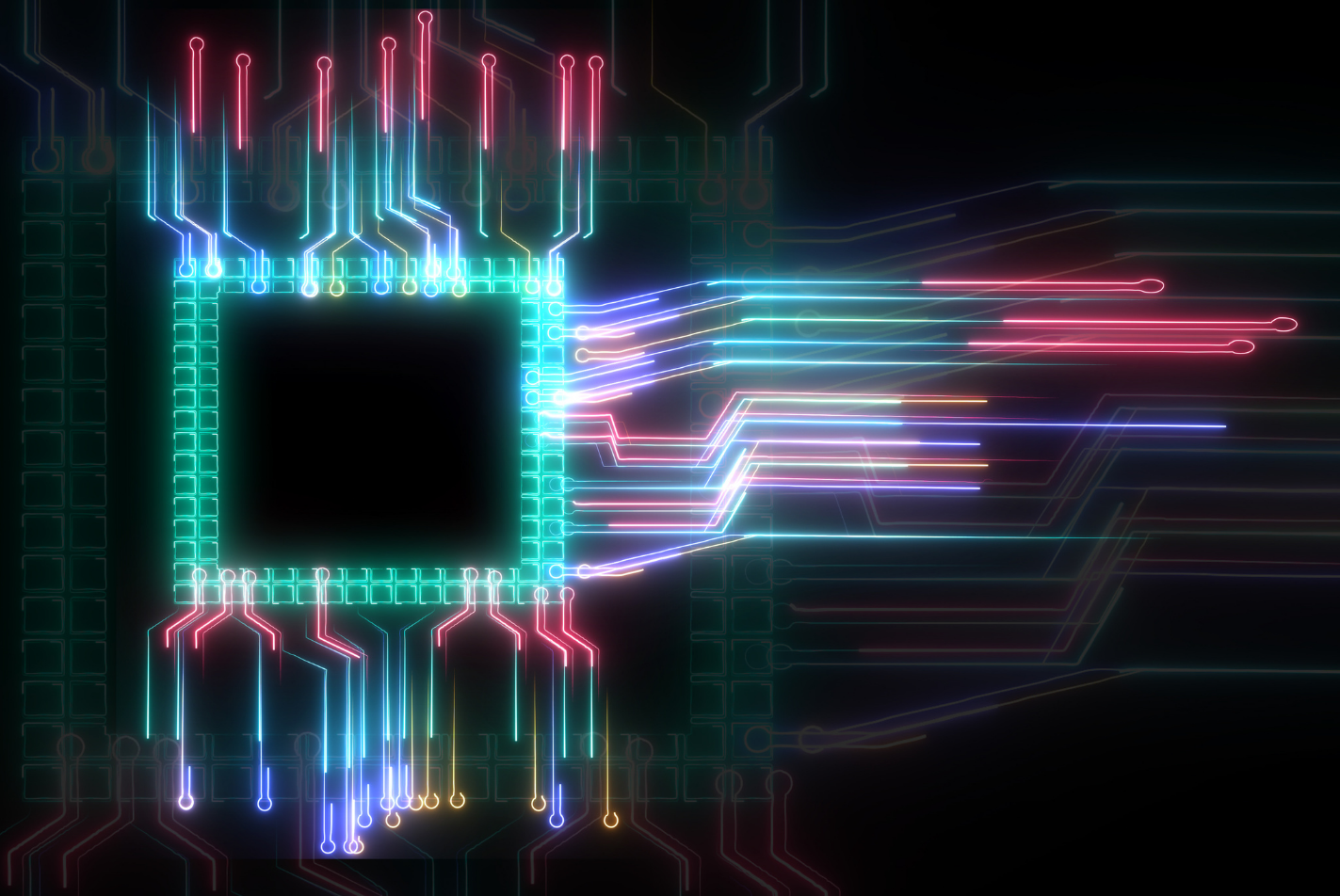
Electronics are all around us - be it computers, your TV, or a smartphone. The electrons shuffling around in our computers transmit the data quite quickly - but there is a much better way to carry and process information - light.
The light particles, photons, have a big advantage compared to electrons. Unlike electrons, that have a mass and an electric charge, photons are massless. That is why they travel much faster – at the speed of light.
Light replaced electrons a long time ago in the transfer of data in communication networks - fibre optic cables keep the globe connected. However, photons have not yet replaced electrons in computers. Why is this desirable?
When electrons are travelling through the semiconductors, they are not only considerably slower compared to the light, but also very energetically inefficient: they are scattered by the silicon and metal atoms, causing them to vibrate and produce heat – that is why your computer warms up while you are using it.
If we could we use photons instead, our computers would perform better and use much less power and could indeed revolutionise the computing - making the computers faster and significantly more efficient.
So what stops us from replacing electrons with photons in computers?
In short the culprit is the silicon, the base of all electronics, or to be more precise its crystal grid. The shape of the alloy of silicon and germanium (SiGe) crystal is cubic - and as much as this is fine for electrons, for photon this is an obstacle because it does not have a direct bandgap.. It cannot generate photons or control their flux for data processing. However, to convince silicon to change its structure and become optically active is not easy.
This is one of the major achievements of the EIC funded SiLAS project. In a Nature publication in 2020, the SiLAS team described how they developed an alloy with silicon that can emit light in an efficient way.
The discovery of light emitting silicon was considered to be the “Holy Grail” of optoelectronics for decades and that’s why it was elected as the Physics World 2020 Breakthrough of the Year. It was awarded to Elham Fadaly, Alain Dijkstra and Erik Bakkers at Eindhoven University of Technology in the Netherlands, Jens Renè Suckert at Friedrich-Schiller-Universität Jena in Germany and the international teams that worked for this discovery.
“If you can integrate a silicon- or germanium based material into technology that can emit light, I think a whole new world opens” Erik Bakkers, Eindhoven University of Technology.
The next steps towards this new world will be done during the new EIC Pathfinder project Opto Silicon that started on May 1st, 2021.
In the long run, the innovation potential of this discovery is very big as the light-emitting silicon-based devices could be used to create low-cost components for optical communications, computing, solar energy and spectroscopy.
- Reference
- 735008 (EIC Pathfinder)
- Project duration
- 1 Oct 2017 - 31 Dec 2020
- Project locations
- Netherlands
- Overall budget
- €3 985 420
- EU contribution
- €3 985 420100% of the overall budget
- Project website
- SiLAS project webpage
Stakeholders
Coordinators
TECHNISCHE UNIVERSITEIT EINDHOVEN
- Address
- Netherlands
- Website
- http://www.tue.nl/en/
Participants
IBM RESEARCH GMBH
- Address
- Switzerland
- Website
- http://www.zurich.ibm.com
FRIEDRICH-SCHILLER-UNIVERSITAT JENA
- Address
- Germany
- Website
- http://www.uni-jena.de
THE CHANCELLOR, MASTERS AND SCHOLARS OF THE UNIVERSITY OF OXFORD
- Website
- http://www.ox.ac.uk
TECHNISCHE UNIVERSITAET MUENCHEN
- Address
- Germany
- Website
- http://www.tum.de
UNIVERSITAET LINZ
- Website
- http://www.jku.at